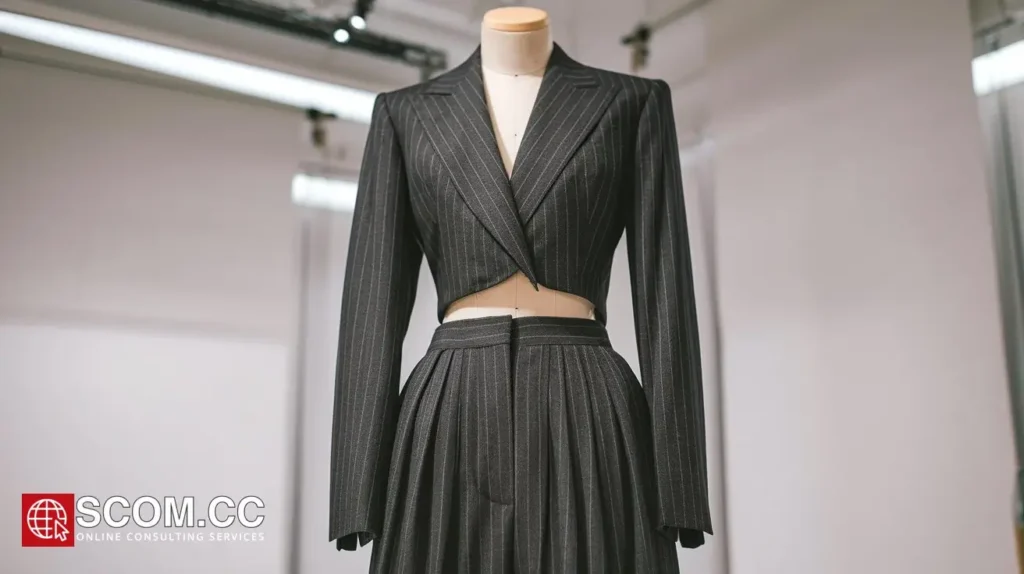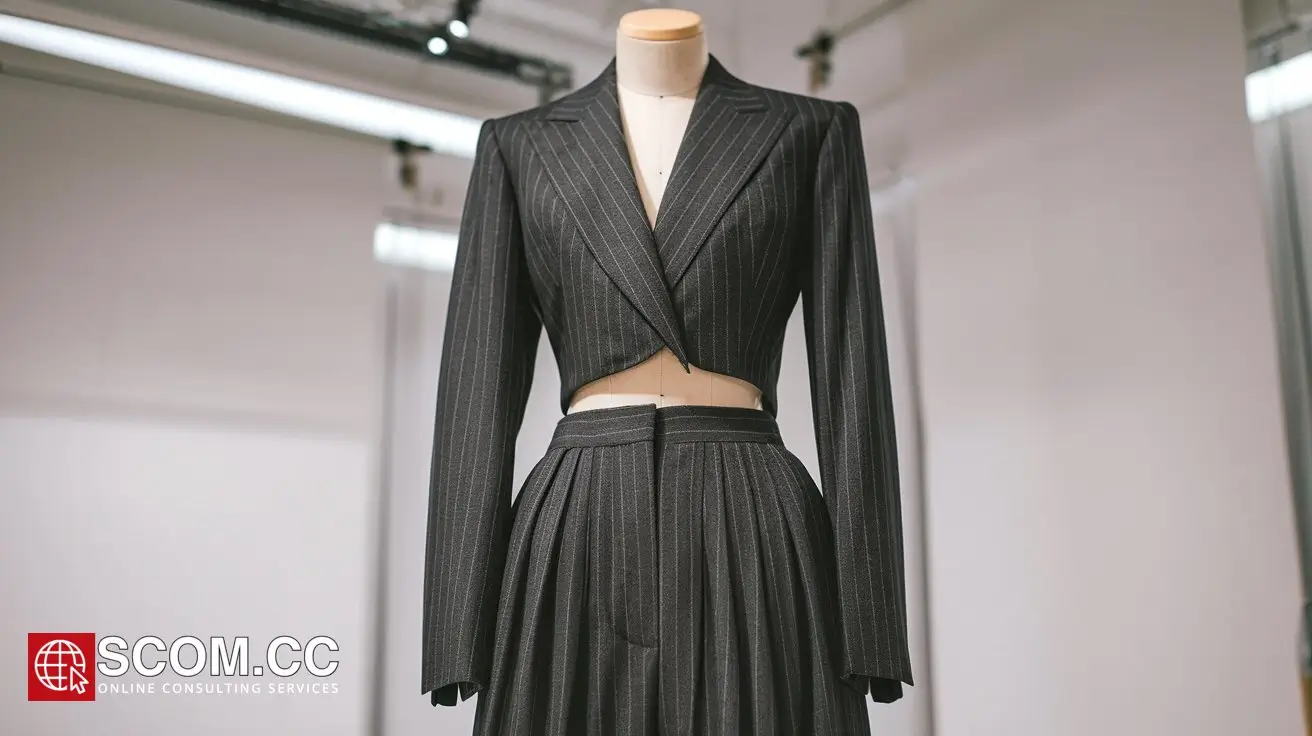What Are the Best Techniques for Adding Artistic Details to Tailored Clothing?

- What Are the Best Techniques for Adding Artistic Details to Tailored Clothing?
- 1. Embroidery: The Art of Needle and Thread
- 2. Appliqué: Layering Fabric for Depth and Dimension
- 3. Hand-Painting: Wearable Art
- 4. Beading and Sequins: Adding Glamour and Shine
- 5. Fabric Manipulation: Sculpting with Textiles
- 6. Custom Buttons and Fastenings: Small Details, Big Impact
- Conclusion
- Summary Table
-
FAQ
- 1. What is the best way to add subtle artistic details to tailored clothing?
- 2. Can I add artistic details to any type of fabric?
- 3. How do I choose the right colors for artistic details?
- 4. Is it possible to add artistic details to already tailored clothing?
- 5. What is the most durable method for adding artistic details to clothing?
- 6. How do I maintain garments with delicate artistic details?
- 7. Can I combine multiple techniques on one garment?
What Are the Best Techniques for Adding Artistic Details to Tailored Clothing?
Tailored clothing is synonymous with precision, craftsmanship, and elegance. However, for those looking to elevate their garments from simply well-made to truly artistic masterpieces, adding creative details can make all the difference. Whether you're a tailor seeking to impress your clients or an individual who wants to personalize your wardrobe, integrating artistic elements into tailored clothing can result in unique, visually stunning pieces that reflect personal style and creativity. In this article, we'll explore the best techniques for adding artistic details to tailored clothing, allowing you to create garments that are not just tailored but also tailored to perfection with an artistic flair.
1. Embroidery: The Art of Needle and Thread
Why Embroidery?
Embroidery is one of the most timeless and versatile techniques for adding artistic details to clothing. By using needle and thread to create intricate patterns, designs, or even images on fabric, embroidery can transform a plain garment into a work of art.
- Hand Embroidery: Offers a personal touch with unique, one-of-a-kind designs that can range from simple monograms to elaborate scenes.
- Machine Embroidery: Provides precision and can be used to create complex patterns consistently across multiple garments.
Popular Embroidery Ideas for Tailored Clothing
- Floral Designs: Embroidering delicate floral patterns on cuffs, collars, or pockets can add a touch of elegance to a tailored piece.
- Monograms: Personalized initials or names on shirts, jackets, or trousers give a bespoke feel.
- Cultural Motifs: Incorporating traditional designs from different cultures can add depth and meaning to the garment.
Project Example: Embroidered Blazer Lining
A tailor adds a floral embroidery pattern to the inside lining of a blazer, providing a hidden artistic detail that only the wearer knows is there.
2. Appliqué: Layering Fabric for Depth and Dimension
What is Appliqué?
Appliqué involves sewing pieces of fabric onto a larger piece to create patterns or images. This technique can add depth, texture, and dimension to clothing, making it an excellent choice for artistic expression.
- Contrast Fabric: Use contrasting colors and textures to create a bold visual impact.
- Thematic Designs: Tailors can craft themes, such as geometric shapes or nature-inspired patterns, to suit the wearer’s style.
Creative Appliqué Ideas
- Patchwork Designs: Combine different fabric scraps to create a colorful, eclectic look.
- Leather Appliqué: Use leather patches for a luxurious touch on jackets, vests, or trousers.
- Abstract Shapes: Add modernity by applying abstract shapes in a mix of bold colors and fabrics.
Project Example: Appliqué on a Suit Jacket
A suit jacket is transformed with leather appliqués shaped into geometric patterns on the back and shoulders, adding both texture and a contemporary edge.
3. Hand-Painting: Wearable Art
Why Hand-Painting?
Hand-painting clothing is a technique that turns fabric into a canvas for creativity. This method allows for complete artistic freedom, as the only limitation is your imagination. Whether you're painting directly onto the fabric or using stencils, the results can be bold, colorful, and truly unique.
- Fabric Paint: Special paints that adhere to fabric without cracking or fading ensure longevity.
- Stenciling: Allows for precise, repeatable designs, making it easier to apply intricate patterns.
Ideas for Hand-Painted Designs
- Abstract Art: Use bold strokes and splashes of color to create abstract designs that make a statement.
- Nature Scenes: Paint floral patterns, birds, or landscapes onto tailored pieces for a naturalistic aesthetic.
- Personalized Imagery: Incorporate elements that reflect the wearer's hobbies or interests, such as musical notes, city skylines, or favorite animals.
Project Example: Hand-Painted Denim Jacket
A tailor turns a plain denim jacket into a piece of wearable art by painting a vibrant floral pattern across the back, making it a standout item in any wardrobe.
4. Beading and Sequins: Adding Glamour and Shine
Why Beading and Sequins?
For those looking to add a touch of glamour and shine to their tailored clothing, beading and sequins are perfect options. These embellishments can catch the light and draw attention to specific areas of the garment, making them ideal for formalwear or statement pieces.
- Hand Beading: Involves sewing beads onto fabric by hand, allowing for intricate and precise designs.
- Sequins: Provide a bold, reflective surface that can add sparkle to any garment.
Beading and Sequin Techniques
- Edge Detailing: Add beads or sequins to the edges of collars, cuffs, or lapels for a subtle yet elegant touch.
- Patterned Beading: Create intricate patterns or motifs, such as flowers or geometric shapes, using beads of varying sizes and colors.
- Full Sequin Embellishment: Cover entire sections of a garment in sequins for a dramatic, eye-catching look.
Project Example: Beaded Evening Dress
A tailored evening dress is enhanced with hand-beaded floral patterns cascading down the bodice and skirt, adding a luxurious feel to the garment.
5. Fabric Manipulation: Sculpting with Textiles
What is Fabric Manipulation?
Fabric manipulation refers to techniques that alter the surface of the fabric to create three-dimensional effects. This can include pleating, ruching, gathering, smocking, and other techniques that add texture and visual interest to a garment.
- Pleating: Creates structured folds that can add volume or shape to a garment.
- Ruching: Involves gathering fabric in specific areas to create soft, textured ridges.
- Smocking: A form of embroidery that gathers fabric in a pattern, creating a stretchy, textured effect.
Creative Fabric Manipulation Techniques
- Origami Pleating: Inspired by the art of paper folding, this technique creates intricate, structured designs on fabric.
- Ruffled Sleeves or Skirts: Add ruffles to sleeves, hems, or collars for a playful, feminine look.
- Textured Panels: Incorporate panels of manipulated fabric into jackets or dresses for a modern, artistic touch.
Project Example: Pleated Dress
A simple dress is transformed by adding origami-inspired pleats to the bodice, creating a sculptural effect that elevates the garment to high fashion.
Often overlooked, buttons and fastenings can be the perfect place to inject some personality into a tailored garment. Custom buttons, zippers, and clasps can serve as both functional and decorative elements, enhancing the overall design of the clothing.
- Engraved Buttons: Personalize buttons with initials, symbols, or designs.
- Unique Fastenings: Consider using unconventional fastenings, such as decorative hooks, clasps, or toggles.
Ideas for Customizing Fastenings
- Contrasting Buttons: Use buttons in contrasting colors or materials to add a striking visual element.
- Vintage Fastenings: Incorporate vintage buttons or fastenings for a touch of nostalgia and uniqueness.
- Thematic Designs: Choose fastenings that reflect a theme, such as nautical-themed anchors or botanical-inspired leaves.
A tailored wool coat is given a bespoke touch with engraved metal buttons featuring the wearer’s initials, adding a subtle yet personal detail to the garment.
Conclusion
Adding artistic details to tailored clothing allows tailors and wearers alike to express creativity and individuality. Whether through embroidery, appliqué, hand-painting, beading, fabric manipulation, or custom buttons, the possibilities for customization are endless. By incorporating these techniques, tailors can elevate their work from mere clothing to wearable art, offering clients garments that are as unique as they are stylish.
Summary Table
| Technique | Details |
|---|---|
| Embroidery | Add intricate patterns or monograms using needle and thread. |
| Appliqué | Sew contrasting fabric pieces onto garments for depth and texture. |
| Hand-Painting | Turn fabric into a canvas with personalized, hand-painted designs. |
| Beading and Sequins | Add glamour and shine with hand-sewn beads or sequins. |
| Fabric Manipulation | Alter fabric surfaces through pleating, ruching, and smocking for 3D effects. |
| Custom Buttons and Fastenings | Personalize garments with unique buttons, zippers, or clasps. |
FAQ
1. What is the best way to add subtle artistic details to tailored clothing?
Embroidery, such as monograms or small motifs, is an excellent way to add subtle, elegant artistic details.
2. Can I add artistic details to any type of fabric?
Most fabrics can be enhanced with artistic details, but some techniques, like beading or painting, work better on sturdier fabrics.
3. How do I choose the right colors for artistic details?
Consider the overall look of the garment and choose colors that either complement or contrast, depending on the desired effect.
4. Is it possible to add artistic details to already tailored clothing?
Yes, many techniques, such as embroidery or appliqué, can be applied to finished garments.
5. What is the most durable method for adding artistic details to clothing?
Embroidery and fabric manipulation techniques are generally durable and can withstand regular wear and washing.
6. How do I maintain garments with delicate artistic details?
Hand-washing or dry cleaning is recommended for garments with delicate details like beading or hand-painting.
7. Can I combine multiple techniques on one garment?
Absolutely! Combining techniques like embroidery and beading can create even more intricate and artistic designs.

To explore more about tailoring, visit our Blog of Tailoring. If you have any questions or need assistance, go to our contact page. Additionally, you can find more information about tailoring and consulting at this tailoring and consulting portal.

Leave a Reply